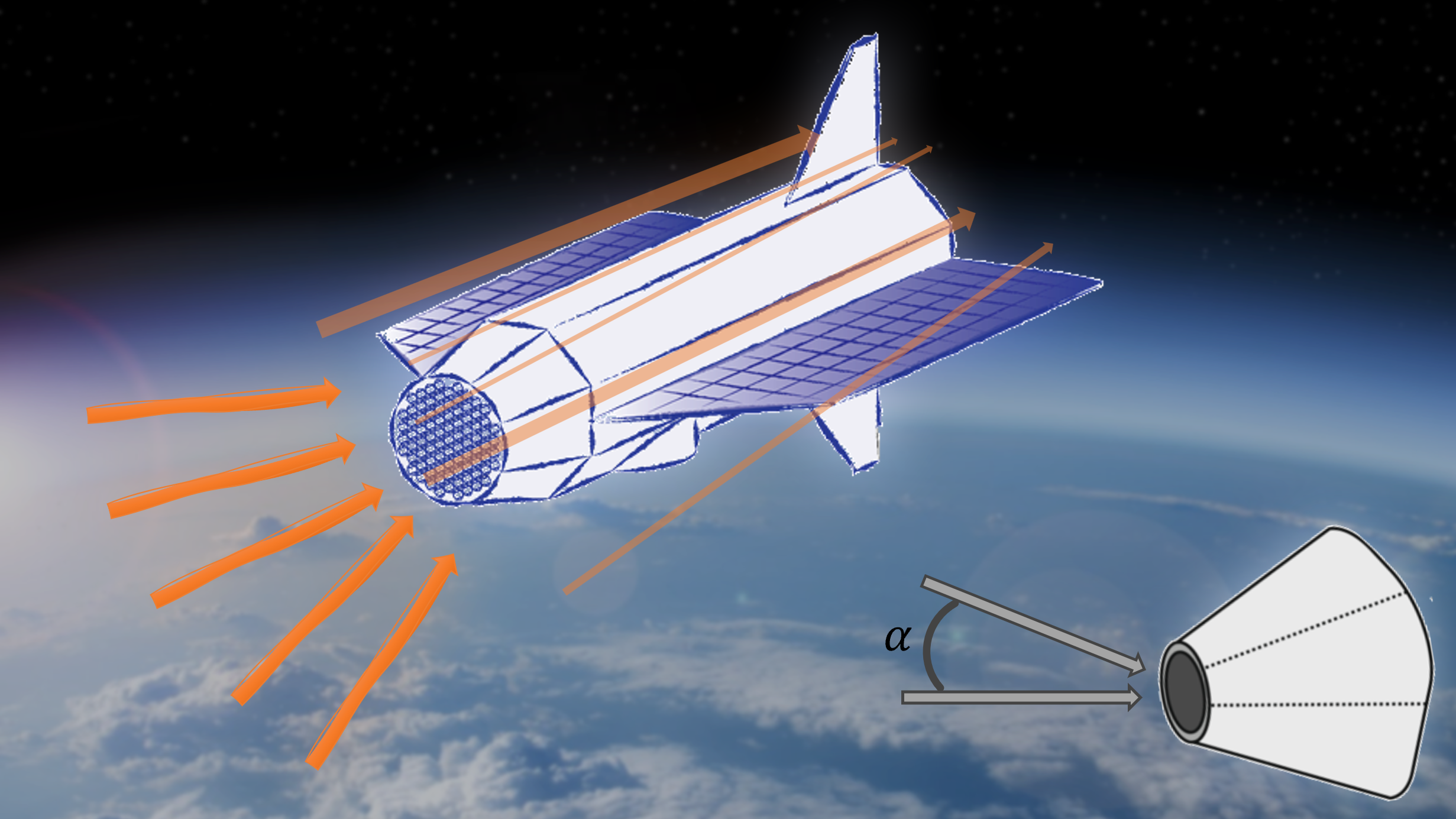This project proposes the development and proof-of-concept demonstration of a novel aerodynamic flow sensor for use in very low Earth orbit (VLEO). Such sensors are needed support effective operations in VLEO for example, minimising experienced drag, enabling advanced attitude and orbit control methods, and improving the effectiveness of atmospheric-breathing electric propulsion (ABEP) systems. Aerodynamic forces and torques are the most significant contributors to position and attitude disturbances in VLEO.
However, the atmospheric environment in VLEO is highly variable due to complex coupling between the space weather and Earth environment [1]. Models for this environment are also highly uncertain due to the lack of spatially and temporally distributed data from in-situ measurement and our knowledge of upper atmospheric processes and underlying gas-surface interactions [2]. Our ability to model and predict the impact of these aerodynamic disturbances is therefore limited. Knowledge of the oncoming flow density and velocity is important for minimising the experienced drag by repointing the satellite towards the oncoming flow direction, performing effective orbit/attitude control and momentum management in the presence of aerodynamic forces and torques, and for novel active control methods [3]. Operation of ABEP also benefits from knowledge of the oncoming flow direction due to the critical relationship between intake efficiency and alignment with the oncoming flow [4,5].
Recent work at The University of Manchester has explored novel sensing methods for use in VLEO, most notably using unique configurations of quartz-crystal-microbalance (QCM) devices to provide measurement of atomic oxygen flux and direction as a proxy for the bulk atmospheric gas flow. This project seeks to build upon this work to perform initial development and proof-of-concept for a sensor for aerodynamic flow vector measurements in VLEO.
____
[1] H. Lühr, S. Rentz, P. Ritter, H. Liu, K. Häusler, Average thermospheric wind patterns over the polar regions, as observed by CHAMP, Ann. Geophys. 25 (2007) 1093–1101. https://doi.org/10.5194/angeo-25-1093-2007.
[2] M. Förster, S. Rentz, W. Köhler, H. Liu, S.E. Haaland, IMF dependence of high-latitude thermospheric wind pattern derived from CHAMP cross-track measurements, Ann. Geophys. 26 (2008) 1581–1595. https://doi.org/10.5194/angeo-26-1581-2008.
[3] D. Mostaza-Prieto, B.P. Graziano, P.C.E. Roberts, Spacecraft drag modelling, Progress in Aerospace Sciences 64 (2014) 56–65. https://doi.org/10.1016/j.paerosci.2013.09.001.
[4] F. Romano, J. Espinosa-Orozco, M. Pfeiffer, G. Herdrich, N.H. Crisp, P.C.E. Roberts, B.E.A. Holmes, S. Edmondson, S. Haigh, S. Livadiotti, A. Macario-Rojas, V.T.A. Oiko, L.A. Sinpetru, K. Smith, J. Becedas, V. Sulliotti-Linner, M. Bisgaard, S. Christensen, V. Hanessian, T.K. Jensen, J. Nielsen, Y.-A. Chan, S. Fasoulas, C. Traub, D. García-Almiñana, S. Rodríguez-Donaire, M. Sureda, D. Kataria, B. Belkouchi, A. Conte, S. Seminari, R. Villain, Intake design for an Atmosphere-Breathing Electric Propulsion System (ABEP), Acta Astronautica 187 (2021) 225–235. https://doi.org/10.1016/j.actaastro.2021.06.033.
[5] C. Rapisarda, P.C.E. Roberts, K.L. Smith, Design and optimisation of a passive Atmosphere-Breathing Electric Propulsion (ABEP) intake, Acta Astronautica 202 (2023) 77–93. https://doi.org/10.1016/j.actaastro.2022.09.047.

